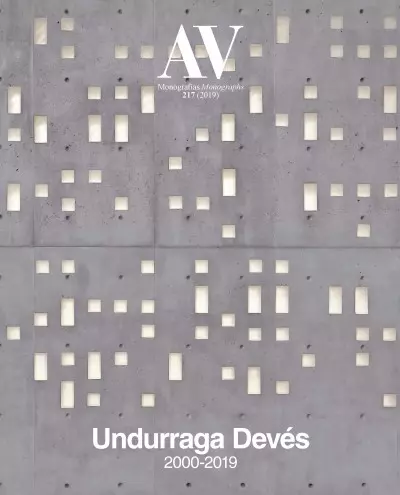

Santiago, Chile
The Arauco Company, one of the world leaders in the wood industry, chose the grounds of an old brewery in the city of Concepción, in the south of the country, for the construction of its main headquarters. The company organized a competition, and thi
Built in 1930, the Mercado de Abastos has always been one of the most significant buildings of Temuco, not only because of its dimensions and privileged urban location in the central city grid, but also for its social importance. The building, which
University campuses can be understood as scale models of cities. Accepting this analogy, we read the structure of the campus of the University of Los Andes in Bogotá as an urban example that refers us to the Anglo-Saxon model garden-city. In effect,
The reuse of old abandoned structures, equipped with new programs, allows giving these buildings a renewed vitality. This recycling exercise entails a commitment with urban sustainability, maintaining the dynamism of built-up urban fabrics. On the ed
The project is inserted in the very center of the grid that brought the city of Santiago into being in 1541, a matrix that became the urban paradigm of the Laws of the Indies in America. A good portion of this grid still organizes the continuous and
This museum was built as a tribute to Violeta Parra (1917-1967), one of the most complete and prominent figures of Chilean art. Her multiple facets (musician, poet, visual artist, ceramist, researcher, staunch defender of the people, uncompromising c
Canonized in 2005, the Chilean Jesuit Alberto Hurtado (1901-1952) devoted his life to providing assistance and comfort to children and young people in need, a mission for which he became a prominent figure in the first half of the 20th century. In 19
Since early times religion has been a rich and constant source of inspiration for art and architecture. Interpreting the sense and form of the sacred spaces is a hard task to take forward in today’s secular context. This chapel, conceived in 21st-cen
North of the town of Zapallar, on the central coastline of Chile, these ‘horizon houses’ sit on a site where the Pacific Ocean – contradicting its name – lashes relentlessly against the rocky cliffs. The steep terrain, rising 25 meters above sea leve
The nueva Costanera neighborhood, east of Santiago, has in the past years gone from being a garden-city residential structure to a more urban one. The old residences have opened their parks to public space, extending the pedestrian areas and includin
Built in the last decade of the 18th century and designed by the Italian Joaquín Toesca y Ricci (disciple of Francisco Sabatini), the Palacio de La Moneda is one of the most beautiful neoclassical buildings in South America, and is the seat of Chile’
The construction of the city is a permanent and by definition unfinished process, and always a reflection of the society that builds it. As a collective creation, the city is the depositary of multiple grids and flows that sum complex and sometimes c
Agriculture shaped the ethos of the Chilean people in the 18th and 19th centuries. This ethos found its urban correlate in the garden-city that served as expansion model for the city of Santiago during the second half of the 20th century. The extensi
The Araucanía region, in southern Chile, is one of the most beautiful places on the planet. It is an area of unique geographical features, filled with forests, rivers, mountains and lakes that create extraordinary landscapes. The Lake House project p
The seismic nature of Chilean territory marks the country’s architecture, as this tower shows. The commission brought the opportunity to address this universal type from a local perspective, making the tactile prevail over the aluminum or glass walls
Contributing to the renewal of the historic city appears to be the most sustainable strategy to preserve the vitality of the urban fabric, resisting in this way the erosion that the unbridled growth of the peripheries has caused in the city. The muse
La participación de la comunidad ha permitido el desarrollo de estas viviendas, que cumplen los requisitos básicos de habitabilidad sin contradecir las tradiciones.
Aunque desde lejos aparenta ser un volumen compacto, de cerca el pabellón chileno revela su rico entramado de vigas de madera que es a la vez su piel y sus huesos.
El más albañil de los colores, el blanco de los muros andaluces de Rafael Alberti y las paredes de adobe encalado de algunos caseríos del valle central de Chile han inspirado este conjunto que se levanta a lo largo del río Mapocho. Se trata de un pro
Cristián Undurraga is a permanent figure in the development of architecture produced in Chile during the last decades of the 20th century. Following his career and analyzing his work is, as perhaps in no other case of his generation, to take stock of
At the threshold of the 1990s, at the instigation of Francesco Dal Co, the Vicenza construction enterprise Caoduro decided to create an architecture award bearing the name Palladio that would be given in recognition of works built by architects under
Cristián Undurraga and Ana Luisa Devés have created works without pedestals. Over four decades ago they set up a studio that became known around the world with the Palladio Award, a prize for architects under forty that James Stirling, Manfredo Tafur
Alberto Valenzuela Llanos (1865-1925) was the most brilliant Chilean painter of this generation. Influenced by the impressionists during his stay in Paris in the early 20th century, his landscapes reflect that fleeting and diffuse hour, so specific o

